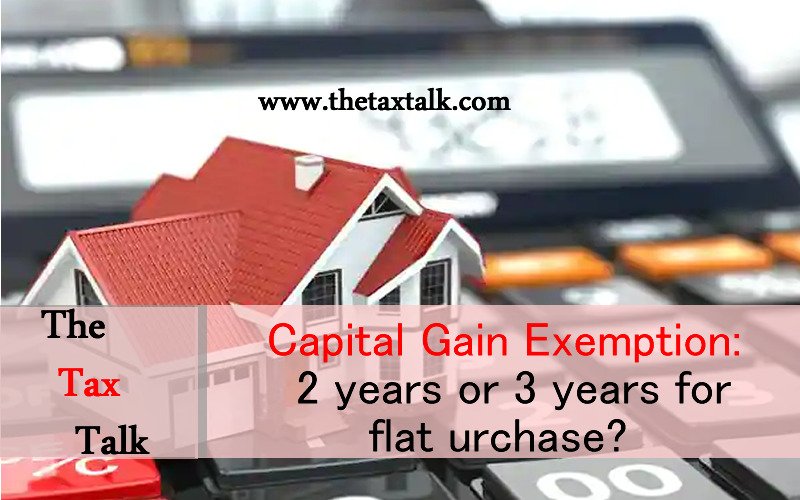![]()
Capital Gain Exemption: 2 years or 3 years for flat Purchase?
Here is a CBDT Circular which may be helpful for the taxpayers with LTCG. It is Circular No. 471 [F. No. 207/27/85-IT(A-II)], dated 15-10-1986 issued by the CBDT. The same is as under:
Capital gains from long-term capital asset – Investment in a flat under the self-financing scheme of the Delhi Development Authority – Whether to be treated as construction for the purposes of capital gains
1. Sections 54 and 54F provide that capital gains arising on transfer of a long-term capital asset shall not be charged to tax to the extent specified therein, where the amount of capital gain is invested in a residential house. In the case of purchase of a house, the benefit is available if the investment is made within a period of one year before or after the date on which the transfer took place and in case of construction of a house, the benefit is available if the investment is made within three years from the date of the transfer.
2. The Board had occasion to examine as to whether the acquisition of a flat by an allottee under the Self-Financing Scheme (SFS) of the D.D.A. amounts to purchase or is construction by the D.D.A. on behalf of the allottee. Under the SFS of the D.D.A., the allotment letter is issued on payment of the first instalment of the cost of construction. The allotment is final unless it is cancelled or the allottee withdraws from the scheme. The allotment is cancelled only under exceptional circumstances. The allottee gets title to the property on the issuance of the allotment letter and the payment of instalments is only a follow-up action and taking the delivery of possession is only a formality. If there is a failure on the part of the D.D.A. to deliver the possession of the flat after completing the construction, the remedy for the allottee is to file a suit for recovery of possession.
3. The Board have been advised that under the above circumstances, the inference that can be drawn is that the, D.D.A. takes up the construction work on behalf of the allottee and that the transaction involved is not a sale. Under the scheme the tentative cost of construction is already determined and the D.D.A. facilitates the payment of the cost of construction in instalments subject to the condition that the allottee has to bear the increase, if any, in the cost of construction. Therefore, for the purpose of capital gains tax the cost of the new asset is the tentative cost of construction and the fact that the amount was allowed to be paid in instalments does not affect the legal position stated above. In view of these facts, it has been decided that cases of allotment of flats under the Self-Financing Scheme of the D.D.A. shall be treated as cases of construction for the purpose of capital gains.
Circular : No. 471 [F. No. 207/27/85-IT(A-II)], dated 15-10-1986.
The same ratio can be applied to other flat purchase as well is what is the view of the most of the author. The same has been discussed in few judicial pronouncements as well.

